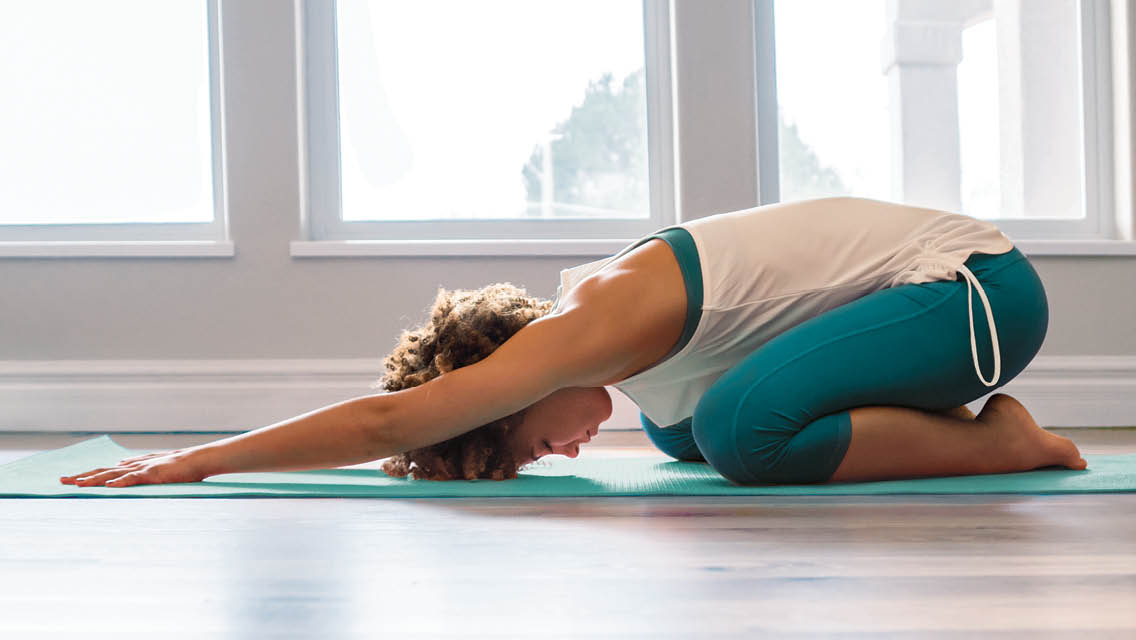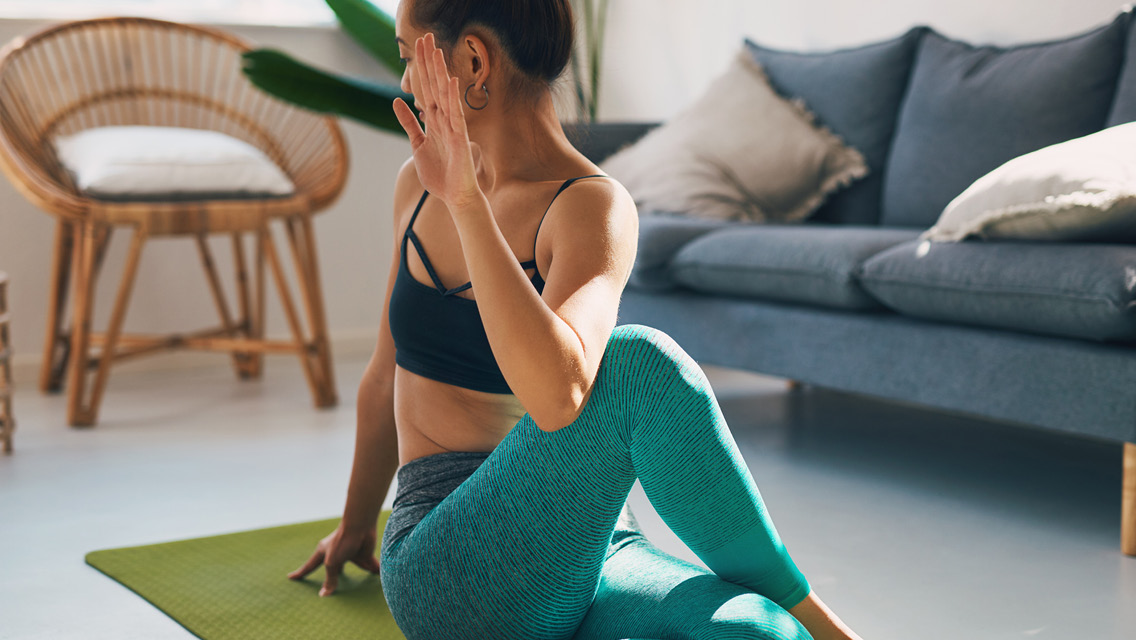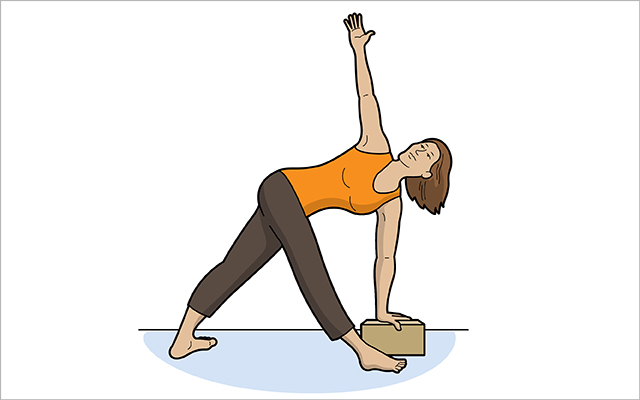Twisting poses are plentiful in yoga. And whether they’re done sitting — like the seated twist featured here — or standing, upside down or on the floor, these moves can stretch the muscles of the abdomen and back and help restore and maintain range of motion through the spine. They can also help support circulation and digestion and promote relaxation and stress relief.
Despite being commonplace, twists have some common pitfalls. One is initiating — or forcing — the twist through the cervical spine (neck) rather than engaging the thoracic spine (mid-back) and the lumbar spine (lower back).
To engage your lower vertebrae and avoid straining your neck, begin by sitting up tall, grounding down through your sit bones, and stacking your shoulders over your hips. Then start the twist from the base of your spine: Visualize a spiral unfurling from your lower back to your mid-back, your upper back, and, finally, your neck.
Another pitfall: “muscling” the twist using the strength of your arms. Moving deeper into the pose with assistance is fine, but try to avoid initiating it by pulling yourself with a hand or elbow.
Yet another issue is disconnecting the movement from the breath. Breathing is a keystone of any asana practice; when twisting, stay aware of your breath and match it to your movements to help deepen your rotation and enhance your relaxation, both of which aid digestion.
Finally, it’s important to know and respect your unique body. If assuming and maintaining an upright posture while seated on the floor is difficult, try performing the twist while seated on a yoga block or a sturdy chair.
The following video and instructions can help you wring the most out of your twists.
Instructions
- Sit on the floor with both legs straight. Cross your right knee over your left leg and place your right foot on the floor.
- Place your right hand beside your right hip or slightly behind you. Inhale and extend your left arm overhead.
- On an exhale, rotate to the right and draw your left elbow down to the outside of your right knee.
- Breathe deeply in this position for four or five breaths. Switch sides and repeat.
Additional Tips
- Rotate gently from the base of your spine to your mid-back, your upper back, and, lastly, your neck, until you’re gazing over your right shoulder.
- Focus on elongating the spine and twisting upward. Don’t hunch over or lean backward as you twist.
- If hooking the elbow is too difficult, reach your left hand around your right thigh and place it gently on your right hip.
Try These Variations
Seated Side Bend
- Sit tall on the floor in an easy, cross-legged (or kneeling) position with your hands on the floor beside you.
- On an inhale, extend your left arm overhead and think about stretching your spine upward.
- On an exhale, gently lean to your right side. Keeping your hips on the floor and your shoulders squared to the front, allow your right forearm to lower toward the floor.
- When you reach the end-range of motion (which may or may not include resting your right forearm on the floor), hold for four to five breaths. Focus on elongating the spine up and over, rather than just collapsing to the side. Switch sides and repeat.
Supine Spinal Twist
- Lie down on your back, then bend both knees so the soles of your feet are flat on the floor.
- Gently lift your hips and shift them slightly (about one inch) to the right, then lower your hips back to the floor.
- Extend your left leg on the floor, then draw your right knee toward your chest, using your hands for assistance (but without forcing your knee down).
- Keeping your shoulders on the floor and your left leg straight, slowly rotate your lower body to the left. Allow your right knee to roll over the left, but don’t force your knee to touch the ground or push on your lower back to force a deeper twist. Let the right knee hang loosely and try to relax as gravity and your breath help you move deeper into the pose.
- Extend both arms at your sides, perpendicular to your body. You can also place your left hand on the outside of the right knee to gently enhance the stretch — but, again, don’t push hard.
- Hold for four to five breaths. Switch sides and repeat.
This article originally appeared as “The Seated Twist” in the May 2022 issue of Experience Life.





This Post Has 0 Comments